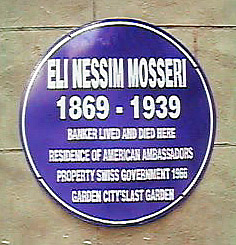
|
|
|
|
|
Cheers to our "talented" literature prize awardee. Your pain his gain !!!
|
|
|
EGY.COM - LANDMARKS - CAIRO - HELIOPOLIS
|
|
A NEW ERA
by Fayza Hassan
Al Ahram Weekly 7 - 13 October 1999 Issue No. 450
Published in Cairo by AL-AHRAM established in 1875.

In March 1997, Al-Ahram Weekly, in cooperation with the Binational Fulbright Commission and the Mubarak Library, launched the National Campaign for the Preservation of the Architectural Heritage of Modern Egypt which, under the auspices of Mrs Suzanne Mubarak, aimed at fostering an appreciation of Egypt's 19th and 20th century architectural heritage. The campaigners also sought to prevent the destruction of historically significant villas built during that period and their replacement by unsightly "modern" hotels, apartment buildings and office blocks.
The campaign caught the interest of several professionals, and Cairo Governor Abdel-Rehim Shehata was approached with a plan to begin raising the awareness of ordinary citizens.
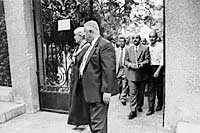
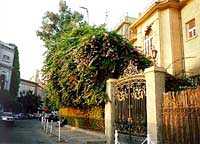


The first target area was Garden City, where original turn-of-the-century villas remain, among the last prototypes of a colonial style which gave several parts of Cairo a uniquely charming elegance. Once the governor had given the green light to the project, the Garden City Historic Preservation Group was formed and set to work mapping the suburb and pinpointing the buildings of interest, which would be marked by a distinctive plaque briefly outlining their history. Writer Samir Raafat, who for some time had been chronicling the history of Garden City's villas and their owners, and who had first launched the idea of the plaques, provided the group with invaluable information. The work nevertheless advanced at a slow and tedious pace, causing many to wonder if anything would ever come of the numerous long meetings. It is to the credit of Ann Radwan, head of the Binational Fulbright Commission, that the first step of the project was eventually completed.
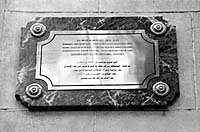 Last week, during a small ceremony attended by Cairo Governor Shehata, some prominent residents of Garden City and other enthusiastic preservationists, the first plaque was affixed to the wall of the Swiss Residence, at 24 Gamaleddin Abul-Mahassin (originally Ismail) Street.
Last week, during a small ceremony attended by Cairo Governor Shehata, some prominent residents of Garden City and other enthusiastic preservationists, the first plaque was affixed to the wall of the Swiss Residence, at 24 Gamaleddin Abul-Mahassin (originally Ismail) Street.
The house originally belonged to naturalised Italian banker and industrialist Elie Nessim Mosseri (1879-1940), whose interesting life and career are recounted in detail by Raafat in his book Maadi 1904-1962, Society and History in a Cairo Suburb (The Palm Press, 1994). Mosseri began showing his business acumen at the age of 19, when, with his cousin Victor Moussa Mosseri, he began buying agricultural land around the Suares railway line in Maadi. When he died on 10 June 1940, he had built himself a financial empire equal to none, but left no male heirs to take it over. He had two daughters from his first marriage to Laure Felix Suares: Simonette, who died young, and Denise, who married first a member of the Dreyfus banking family of Basle, then Max Harari, whose father, Victor Harari Pasha, was one of Delta Land's first directors. (The Delta Land Company was at the origin of the creation of Maadi, and Elie Mosseri served actively on its board from 1918 on, becoming its chairman in 1932.)
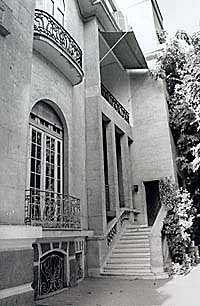
A decade after Elie Mosseri's death, his third wife, Helene, who is rumoured to have been on the best of terms with King Farouk, fell to her death from the second floor window of the Garden City mansion after mixing drugs with alcohol, writes Raafat. The mansion was purchased in the 1960s by the Swiss Embassy and was for a short time the residence of a US ambassador.
In his informal address to the audience gathered in the splendid garden of the mansion (Garden City's last original garden), Raafat briefly reviewed the history of the district, which British developers carved at the turn of the century out of the grounds of the three khedivial palaces that had previously occupied the area: Khedive Ismail's palace, his brother Ahmed Pasha's palace, and the Qasr Al-Ali, the palace of the khedive's mother or Walda Pasha. For a long time, although the area was designed along the model of the winding rural roads dear to the British, all the streets of Garden City retained the names of members of the khedivial family, or of fixtures which had existed on the palace grounds at one time, such as Maamal Al-Sukkar (the sugar refinery) and Al-Tulumbat (the water pumps).
The Garden City event included a walk, conducted by Cairo's governor, along Gamaleddin Abul-Mahassin Street, during which he called for more involvement on the part of individuals and companies occupying buildings in the area. He pointed out that, while the government accepts responsibility for improving the living conditions of Cairo's poor quarters, it is high time that the inhabitants of affluent districts and suburbs like Garden City, Zamalek, Heliopolis, Maadi and Mohandessin organise owner-tenant groups and take charge of the restoration and maintenance of the buildings in which they live.
"It is not enough," he said, "to dress up the façades with a fresh coat of paint. The infrastructure of old buildings needs total renovation and inhabitants should devise methods of keeping buildings of historical value in good condition. Only in this way can we hope to retain at least part of our invaluable heritage." Shehata added that, since the beginning of the campaign, the governorate has effected a complete survey of all the villas in Cairo featuring unique characteristics, and that a ministerial decree now protects these buildings from destruction.
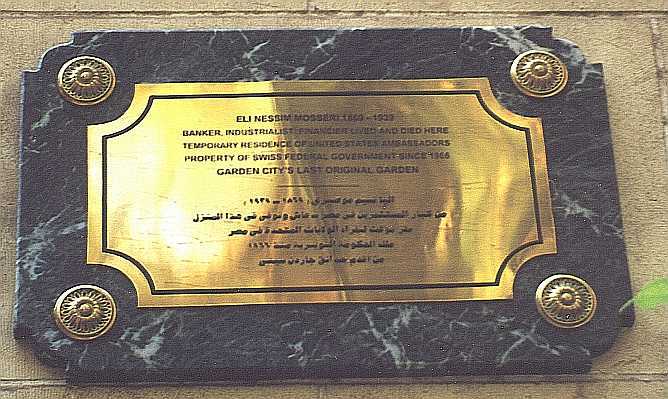
Click on left picture
Most photos by Randa Shaat
|
|
|
|